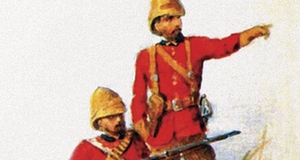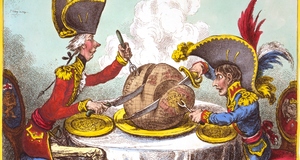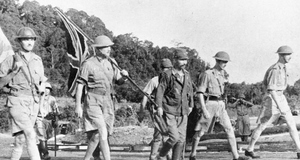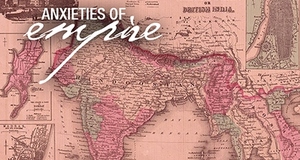Featured Article:Rudyard Kipling's Literary and Historical LegacySamuel Chew and Richard Altick, in The Nineteenth Century and After (1967),5 discuss Kipling in the context of the novel. Most of their four-page “discussion” of Kipling is a mini-biography and analysis of style, with a few critical opinions of literary works thrown in. The authors consider Kipling’s early short story collections of Anglo-Indian life “juvenilia,” in which he “display[s] . . . cynicism, crude jocularity, coarse flippancy, and brutality” (1503). They won him eventual fame in England, but the authors see nothing of literary value in these early collections. However, some recent critics have devoted entire volumes to Kipling’s Indian fiction, most of which encompasses his early story collections.6 Kipling’s The Light That Failed they consider not “an entire success” (1503), as do other critics of this period. The authors mention a wide range of his works, but some of their critical judgments are no longer widely accepted. Kim they view as “a picaresque yarn” that contains “inaccuracies in the interpretation of native character,” which “are redeemed by wisdom, geniality, and humor” (1504). However, recent critics see Kim as more than “a picaresque yarn.”7 The authors’ final judgment of Kipling’s portrayal of “the mysterious East” is that “he could not share its visions but he could suggest their infinitude” (1505). They also discuss some poetry, saying “it [is] impossible to divorce the two departments of Kipling’s achievement,” which is just what Alistair Fowler does in his literary history (1987). Kipling’s “Recessional” and “White Man’s Burden” are worthy of discussion, but not “The Last Chantey,” “The Long Trail,” “The Dead King,” or “Epitaph,” which they mention in a discussion of Kipling’s rhetoric, rhythm, and capacity for national feeling (1505-06). These four works are not discussed. Devoting a separate chapter to most major literary figures in the nineteenth century is an excellent idea, interspersed with chapters on specific genres and movements during the Romantic and Victorian eras. The authors aim for comprehensiveness and depth and they succeed, although I wonder how much biography is interspersed with their critical discussions. Such material should appear in an appendix, like The Routledge History of English Literature (1997). Emphasis should be placed more on literature than author. Although this book contains an excellent bibliography, it should list particular works under authors’ names. It also contains more biography than critical analysis. Chew and Altick rarely connect authors, works, and their relation in literary value; chapters on separate authors lack an evaluation of their place in a specific movement or period. David Daiches’ A Critical History of English Literature (1969), in its volume on nineteenth‑ and twentieth‑century literature (4), devotes a lengthy discussion to Kipling. In his chapter on the Victorian novel, Daiches places Kipling under “the novel as entertainment” (1082), alongside minor novelists like Trollope, Wilkie Collins, Gaskell, Kingsley, R. D. Blackmore, Stevenson, and Carroll. Today, Gaskell would be placed among the major ones. Apparently at this time, most critics and literary historians considered Kipling’s Kim, The Jungle Books, Captains Courageous (1897), and Stalky and Co. (1899) novels of “entertainment” (1082). Although Kipling receives four pages of literary‑historical treatment, more than what Daiches devotes to the Bronte sisters or Meredith, the difference is that Daiches considers all genres of Kipling’s oeuvre, not just his novels.In his discussion of Kipling’s oeuvre, Daiches limits himself to Plain Tales from the Hills (1888), The Jungle Books, Puck of Pook’s Hill, Stalky and Co., and Captains Courageous (1091‑93). He also discusses six poems, three of which are currently anthologized: “Recessional,” “Danny Deever,” and “The Widow at Windsor” (1091‑93).8 According to Daiches, Kipling’s “manipulation of the narrative,” in Plain Tales From the Hills, “is often excellently done” (1091). Today, however, many stories in this anthology are discussed more for their problematic portrayal of empire than their literary merit.9 In like manner, Kim, the subject of much critical discussion in the last two decades, here receives one sentence: “Other codes and rituals may command wondering respect, as the Indian way of life does in Kim, but that is ultimately because Kipling cannot really imagine the essential otherness of another way of life” (1091). Recent critics see “otherness”; the question is Kipling’s treatment of such in his fiction.10 Captains Courageous is considered a children’s novel of questionable literary merit.11 However, Daiches notes in “Recessional” what many critics also see:12 a “moment of humility,” in which Kipling shows “his awareness of the temptation to [display] imperial pride posed by imperial obligation” (1092). Daiches’ literary opinion of Kim is a measure of his view of Kipling’s imperialism and how it influenced his oeuvre. Daiches considers Kipling’s “imperialism . . . a schoolboy imperialism,” in which “duty and responsibility” to the Empire “are not thought out beyond the schoolboy level” (1090‑91). Daiches cannot see past Kipling’s imperialism or judge his literary value without this bias. He thinks Kipling’s recent literary reputation is marred by his “imperialist view[s]” (1090). With the rapid disintegration of the British Empire and people’s fights for human rights during this period, writers’ imperial views were not popular works for discussion. According to Daiches, Kipling is suffering for political views that he held when popular, at the height of British imperialism (1090). Inherent is Daiches’ opinion that Kipling’s literary value is temporal, especially works with an imperialist stance. Daiches repeats how he thinks “a later generation” views Kipling: “inadequate or narrow or offensive in his political and moral views” (1092). According to Daiches, Kipling was unsure of “his own view of society . . . or even of empire” (1092). However, Daiches believes “the same qualities that produced his faults also produced his virtues, and made [Kipling] at his best the storyteller of an epoch” (1092). Daiches does not clarify the qualities and virtues in this glowing description, leaving readers to guess what made Kipling great. Like Legouis and Cazamian, he does not mention any short stories by name. Volume four of Daiches’ literary study appears comprehensive. Chapters are divided by genre and period. However, Scott’s works are placed in Scottish literature rather than the 18th-century novel. Covering the Restoration period to the early twentieth century in one volume seems like a stretch, since some authors and works are given less attention than what a volume devoted to the nineteenth century might give. Many minor authors are mentioned, with the “great ones” given full discussion. I also like Daiches’ emphasis on considering genres. The volume, however, could use bibliographies and mini-biographies to supplement the work, like Legouis and Cazamian’s History, for anyone who would like to do further research in a particular period, genre, or author. In the period between World War II and 1970, literary historians began criticizing Kipling’s imperialism, and letting it color their critical opinion of his imperial fiction. During the period from 1970 to modern times, however, literary historians’ analysis of Kipling’s oeuvre has become much more individualistic. Discussion of Kim still appears, but critical opinion of Kipling’s imperialism, as it appears in Kim, changes to a more positive outlook. Although most recent literary historians emphasize Kipling’s imperial literature, others are beginning to recognize the literary value of his English literature, which would fit the modern period, not the Victorian literary era. The question now becomes whether Kipling is wholly Victorian or modern, or a mixture of both. Alistair Fowler’s one‑volume History of English Literature (1987) first discusses Kipling in the context of Victorian poetry, in two phases: “lyric transformations” and “different voices” (250, 261). In this latter group, Kipling’s poetry is placed alongside Arnold, Elizabeth Barrett and Robert Browning, Clough, Hardy, Christina Rossetti, and the American Whitman. As a prelude to Kipling, Fowler notes various changes in poetic diction, which began in the late nineteenth century, such as “a new precision of language . . . with its abrupt shifts, its unpredictability, its freshness” and “its loss of weight” (270). Fowler then describes Kipling’s ballads as “strongly effective . . . in their use of demotic language”; he qualifies his admiration by calling these ballads “left‑handed by‑works” (270). According to Fowler, Hardy’s “provincial” strengths, which led him to the “ballad form,” are “interpret[ed] . . . with a more inward tact than Kipling” (271). Compared to Tennyson, Browning, and Hardy, he is unworthy of greater discussion. Unlike Daiches, Fowler does not name any of Kipling’s poems or ballads. His analysis of Kipling’s poetry is simply inadequate. However, as with Hardy’s novels Fowler discusses Kipling’s stories in his “Modernist Fiction” (1890‑1910), which he considers “as distinct from what followed as from what preceded” (311). According to Fowler, although there were no departures from the elements of the Victorian novel, modern fiction was “new . . . in its formal compression, its radical criticism of society, and its comprehensive address to tradition” (311). Under “Short Fiction,” Kipling’s stories are discussed alongside Lawrence, James, Joyce, Mansfield, and Welty, with each author treated to a page or less. Fowler explains that the modern story is a twentieth‑ century phenomenon. However, such masters as Dickens, Hawthorne, and Poe also influenced the modern short story, although only after the experimental novels of James and Joyce appeared could the genre reach its full flowering (335). Fowler’s discussion of Kipling the storyteller focuses on his style, but with no evaluation of the stories. Fowler explains his reasoning by stating, “The telling is more important than the story told” (336). He mentions five of Kipling’s later stories that he thinks are the best, all of which have English settings: “They,” “Mary Postgate,” “The Wish‑House,” “On the Gate,” and “Dayspring Mishandled” (337). Fowler seems aware of recent criticism on Kipling, since literary critics are currently analyzing most of these stories.13 However, Fowler’s judgment of Kipling’s earlier work, those with an imperial setting, is inadequate. He believes many are “marred by repetitiousness and journalistic crudity” (337). Although some critics share this evaluation of Kipling’s early style, they also think the English stories lack what the Indian ones had: local color.14 Fowler believes these stories succeed “partly because of [Kipling’s] extraordinary empathy with all manner of men, regardless of colour or creed or class” (337). The author is “as little of an imperialist as Conrad” (337). Such judgment is a radical departure from Daiches’ study, showing a spreading trend in Kipling criticism in the 1980s: the positive effect of his imperialism on his work.Continued on Next Page » Suggested Reading from Inquiries Journal
Inquiries Journal provides undergraduate and graduate students around the world a platform for the wide dissemination of academic work over a range of core disciplines. Representing the work of students from hundreds of institutions around the globe, Inquiries Journal's large database of academic articles is completely free. Learn more | Blog | Submit Latest in Literature |


















